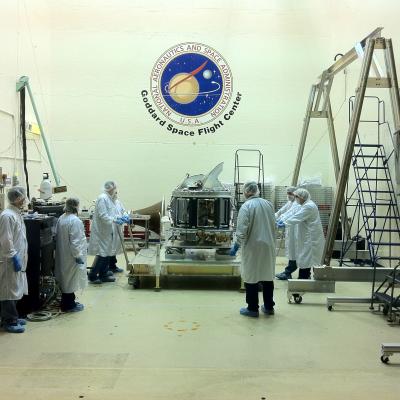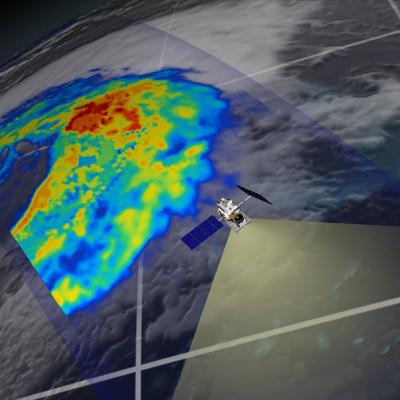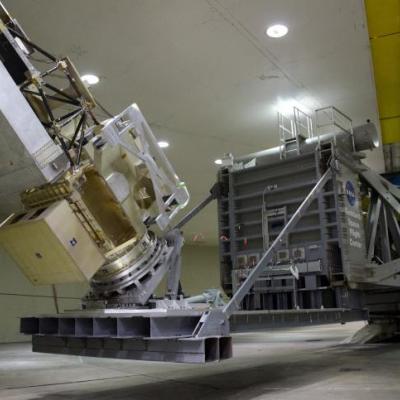testing
Solar Array Vibration and Acoustic Testing
High Gain Antenna System Testing
GPM Microwave Imager Instrument Arrives at Goddard
GMI in Electromagnetic Interference Testing
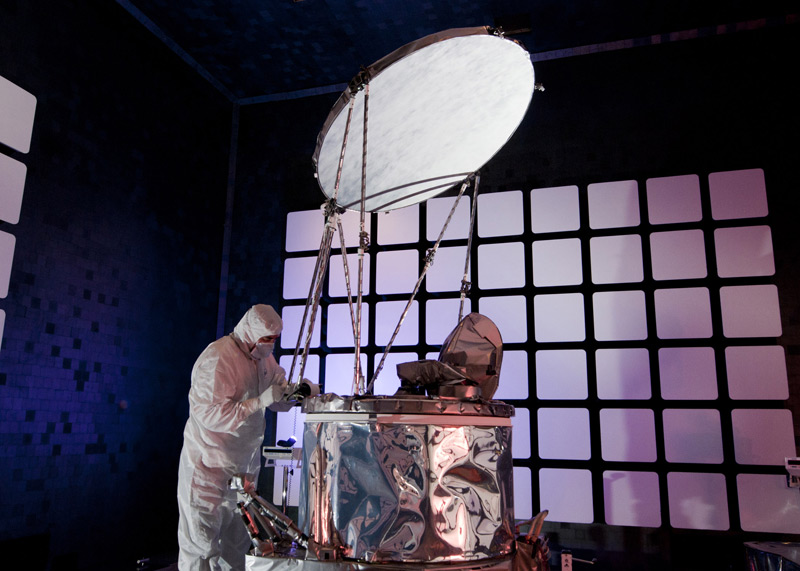
GPM Solar Array Deployment Test
(ambient audio only)
This and other similar tests will verify the deployment function of the GPM Core Observatory solar arrays in ambient condition. Data such as deployment time, hinge forces, and system stiffness will be gathered and reviewed for requirement compliance. The qualification unit was assembled with flight and non-flight components. The flight components will be removed and integrated with the flight unit after qualification testing.
Setting up GPM on the High Capacity Centrifuge
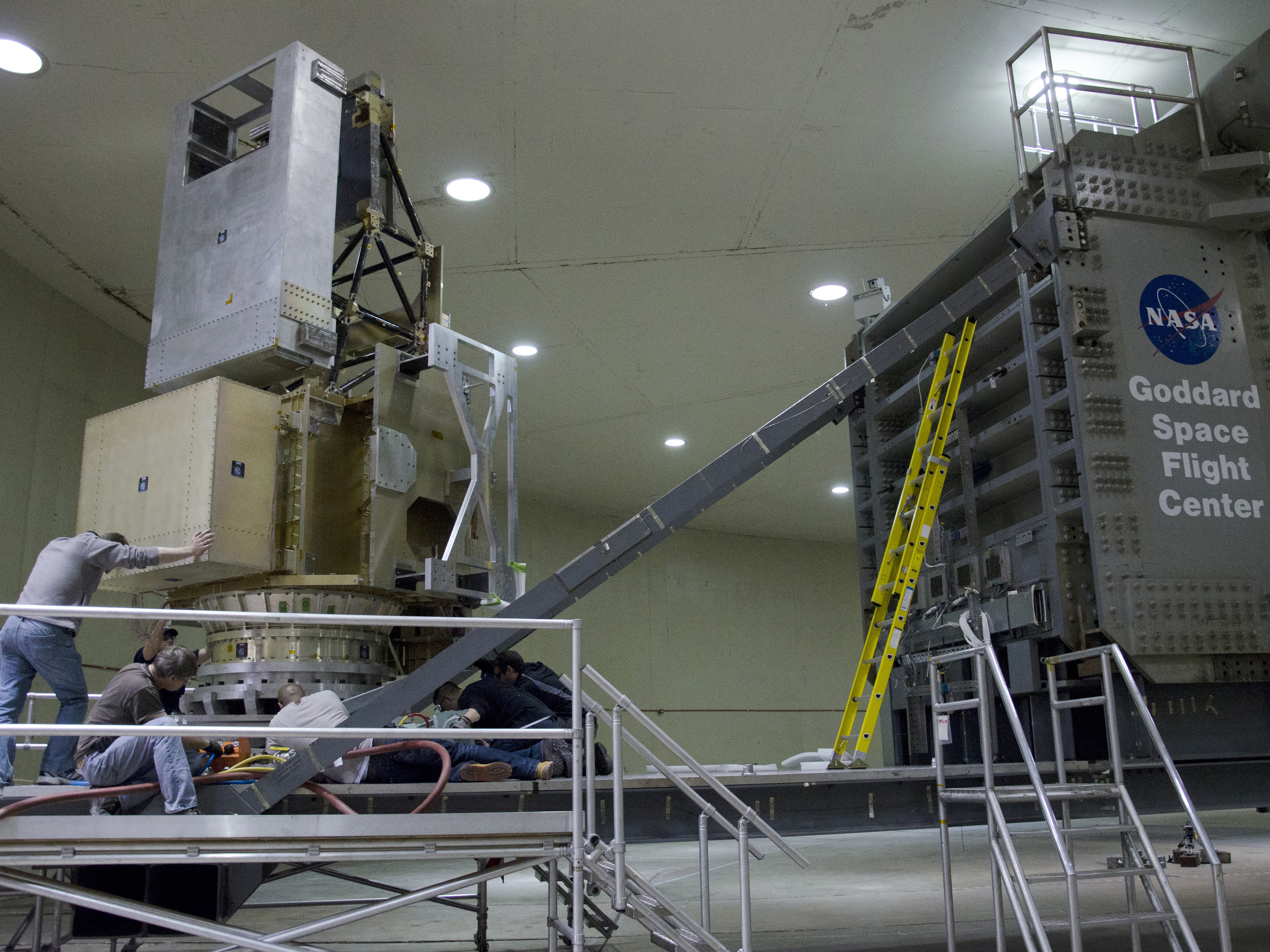
Testing GPM on the High Capacity Centrifuge
(ambient audio only)
GPM moves from the clean room to the test chamber on a dolly without wheels. Compressed air is pumped out under airpads that float the Spacecraft on a bed of air. The wind generated when the centrifuge moves at its maximum speed are more than 200 mph - that's tornado speed. But since they move with the centrifuge the satellites tested only feel 20 mph winds. Leaning outward at 45 degrees for one test orientation, GPM comes within 28 inches of the wall. When lifted onto the platform it cleared the ceiling by only five inches.


